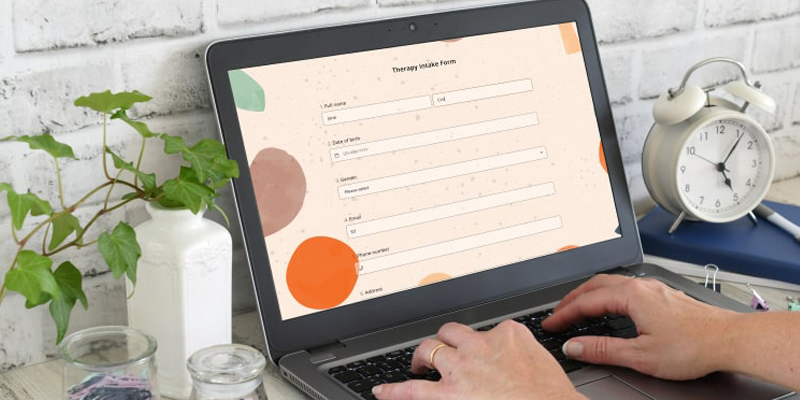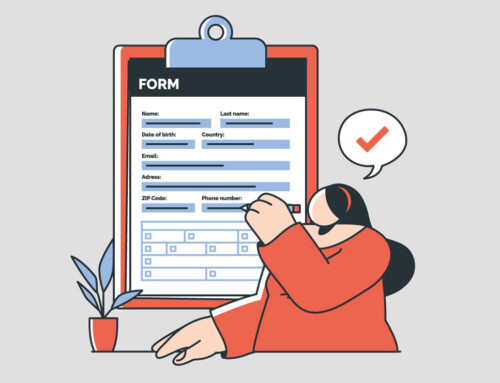Contents
What is an intake form?
If you’re a lawyer, you should know that intake forms are an important part of the legal process. But if you don’t know what an intake form is, it’s basically a way for you to collect important information from your clients at the beginning of your relationship so that you can better understand the case and serve them best. An effective intake form will help ensure that everything gets done on time, keep costs down by avoiding unnecessary steps in the process (like scheduling two different meetings), and give your clients peace of mind knowing that their case has been given thoughtful attention from an experienced professional.
What to Include on Your Client Intake Form
- Essential information first. Clients are more likely to complete a form if they don’t have to scroll through a lot of questions and can see the most pertinent information upfront.
- Relevant information. It’s important for clients to know exactly what services you provide and how much those services cost so that there are no surprises when it comes time for billing or payment. Plus, if there’s an area where you think you could improve (like adding more treatment options), this would be a good place for doing so!
- Enough space. Provide space for clients’ signatures or initials next to each question/statement on their intake sheet in case there are any issues with what was written down by either party during the visit; this way both parties can agree upon exactly what happened during their interaction together before moving forward into treatment planning discussions later on down the road.”
1. Name of the Client
The first question on your client intake form should be “Name of the Client”. This will allow you to easily identify each client and keep track of their information. If they don’t know their name (in some elderly will cases), simply ask them what they go by and write that down instead. For example:
- Joe Smith (His full name is Joseph Smith)
- Joe smith (He goes by Joe)
2. Location of residence and contact information for client
This is a good place to ask for your client’s preferred method of communication. Email, VoIP systems (if you use one) or a phone number are all great ways to stay in touch with clients; be sure to include them here so that you have all of their info in one place.
You can also record the information in Runsensible and utilize its built-in features to contact clients through email, SIP phone or text messages.
3. Birthdate of the client
The client’s birthdate is an important piece of information, as it helps determine the client’s age. If you are working with children or teens, it’s critical that you know their exact age in order to provide them with appropriate services.
Birthdates are also used to determine whether or not a client is over the age of majority for their province or territory (18). In some cases, this could affect their eligibility for certain benefits and programs offered by your organization.
4. Relationship to you
This question is important for two reasons. First, it allows you to get an idea of how your client will feel about working with you and what expectations are going into the project. Second, it helps determine whether or not there are any conflicts of interest that might arise during the course of your work together.
5. Whether they have a lawyer already and who it is
If you have a client who does not have a lawyer, it’s important to ask whether they’ve talked to one before. If the answer is no, then this is where you can help them by explaining how their case will be handled from start to finish and what kind of time frame they should expect.
If they do already have representation and are looking for an attorney as co-counsel or second opinion, then it will be helpful for them if you know who their current attorney is so that you can speak directly with him or her about the case. It will also help prevent any potential disagreement later on down the road if something arises during discovery.
6. Case history
The case history is the most important part of your intake form. This section helps you understand your client’s situation and how they got to where they are, which will help you determine what their expectations are for thrapy and what kind of results they want to achieve. It also helps you get a sense of their timeline for therapy, so that you can plan accordingly.
The case history should include:
- A description of current symptoms (for example, “feeling depressed” or “experiencing panic attacks”)
- When these symptoms began occurring (for example, “in college” or “after moving away from home”)
- How often they occur (for example, every day)
7. Other lawyers they’ve spoken with/received advice from
You may want to ask about other lawyers the client has spoken with or received advice from in this matter. If so, you will want to be sure that you can contact them for more information about the client’s case. If a client has already spoken with another lawyer, you might ask for their contact details and a summary of their advice.
8. Financial information (income and expenses)
Including financial information in your client intake form is necessary for several reasons. First, it helps you determine which type of lawyer your client needs. For example, if they have a simple matter that doesn’t require much work on your part and won’t take long to resolve, then you might be able to handle their case as an associate attorney or paralegal. However, if their case is more complex and involves extensive research into legal precedent or discovery (the process by which parties obtain evidence from each other), then you may need to hire an experienced attorney with expertise in those areas of law rather than a paralegal or legal assistant.
Secondly, including financial information will enable you to establish a reasonable fee structure for handling the case and making sure that your billing method is convenient for the client as well. This can help ensure that both parties remain happy throughout the case.
Take these 8 questions into consideration when designing your own intake form
- Make sure you have all of the information that you need.
- Include a privacy notice at the top of your form and make sure it’s easy for people to see and understand. They should know how their information will be used and what their rights are in relation to that data, including whether or not they can access it at any point during or after working with you.
- Make sure your intake form is easy for clients to fill out online or on paper (if that’s how you’ve decided to distribute it). This means avoiding unnecessary fields and making sure there aren’t any confusing questions or instructions within each field of data entry; also make sure that each section has an “additional comments” box where clients can write anything else they want about themselves or their situation, so as not leave anything out! You don’t want there being any surprises later down the line when something comes up unexpectedly during therapy sessions–it’s all part of being prepared!
Use an online tool to create intake forms for your clients
To make the most of your client intake form, you need to get it into the right tool. A cloud-based CRM like RunSensible makes it easy for clients to fill out forms and track their progress. It also helps you keep all of your client information secure and organized in a virtual environment where you can keep your clients’ sensitive data secured.
Once you’ve created an intake form that works for your practice, share it with us! We’d love to see how other lawyers are doing!
Conclusion
Hopefully this list of questions has given you some ideas for your own intake form. If you’re looking for a place to start, we highly recommend using one of the templates available online. And remember, there’s no right or wrong way to do things when it comes down to design choices like fonts and colors: just make sure that what works best for your clients will also work best for you.
If you want to read more about improving your law firm or legal practice to its limit, we suggest that you head to our blog.
Disclaimer: The content provided on this blog is for informational purposes only and does not constitute legal, financial, or professional advice.








